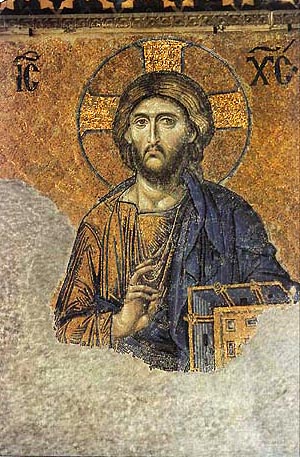Hagia Sophia
| Hagia Sophia | |
|---|---|

| |
| Literal meaning | holy wisdom |
| Greek name | |
| Greek | Aγία Σοφία |
| Romanization | Hagia Sophia |
The Hagia Sophia is a major landmark in Istanbul, Turkey (formerly Constantinople). Though it began as a church, the building was converted to a mosque after the Ottoman sacking of Constantinople in 1453. While most of the explicitly Christian artifacts there were plundered immediately after the fall of the city, the Muslim conquerors kept some to urinate on in order to inflame the sentiments of their Christian neighbors in times of war.[1] From 1935 until 2020, the building served as a museum.[2] In 2020, it was redesignated a mosque by Turkish dictator Erdogan. Since then Islamic prayers have been held in the mosque. [3]
Along with being a church, the building served as a meeting place for the Byzantine nobility.
The church was built by the Byzantine emperor Justinian, who is said to have exclaimed upon its creation, "O Solomon, I have outdone thee!" The reference is to Solomon's Temple. The architects of St. Sophia were Asiatics: Anthemius of Tralles and Isodorus of Miletus. [1]
See also
References
- ↑ Mainstone, R.J. "Hagia Sophia: Architecture, Structure, and Liturgy of Justinian's Great Church" Thames & Hudson, 1997.
- ↑ http://gbgm-umc.org/umw/bible/procopius.stm
- ↑ Turkey's Hagia Sophia holds first Friday prayers since conversion back to mosque"



